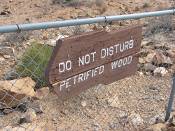The Cypresses group
What kind of species are you dealing with.
All species.
This group of conifers can be found in (public) gardens: often not conspicuous but they are everywhere. Some are easy to recognize. The species below are most common and not impossible to keep apart.
Apart from the more common species there are hundreds of varieties different in form and colour. Many of them look so alike only the experienced gardener can tell them apart. These pages will help you get started, but no more than that I am afraid.
Some tips: try to look for the fruits, they are often good for clues.
All garden-conifers on this page have no needles (like fir-trees on pines) of leafs (like hardwoods), but a kind of segmented little green twigs, forming sheets/fans of green twigs.
<------ click
Most common are Port-Orford_cedar (1), Arbovitaes (5abc) and Leyland cypress (5e).
-
1. Tree is potentially large and conical (formed like christmastree)
 Clear white lines on the back of segmented brushwood. Generally dark green, but there
are numerous colour-varieties upto blue and yellow. Fruits are small round balls (see photograph), green to woody-brown. Balls have several tiny stings/thorns. Frequently top of tree is hanging, but certainly not always. --> Port-Orford_cedar
Clear white lines on the back of segmented brushwood. Generally dark green, but there
are numerous colour-varieties upto blue and yellow. Fruits are small round balls (see photograph), green to woody-brown. Balls have several tiny stings/thorns. Frequently top of tree is hanging, but certainly not always. --> Port-Orford_cedar
-
2. Like 1 but fruits have larger thorns: .
 No white lines on back of the branches. Tree is less conical: branches are more distinguishable, they are generally hanging down to extreem "weeping/lamenting". Trees also exist without the weeping features. Varieties are also present a lot in colours but also in form. Much less common --> Nootka_falsecypress
No white lines on back of the branches. Tree is less conical: branches are more distinguishable, they are generally hanging down to extreem "weeping/lamenting". Trees also exist without the weeping features. Varieties are also present a lot in colours but also in form. Much less common --> Nootka_falsecypress
here another description
-
3. No white lines on the back of brushwood but more white pear-shaped spots ,
 -->
-->
Hiba_arborvitae (very rare, I find it the most beautiful conifere)
-
4. Form of tree is very narrow conical (sometimes also a bit formless but still conical). No clear white lines. Fruits are rather big ball-shaped and a bit silver-shiny, up to 4 cm.
 Leafs/ sheets of twigs just like Port-Orford_cedar, but a bit less forming layers: more twigs ending like simple twigs.
Leafs/ sheets of twigs just like Port-Orford_cedar, but a bit less forming layers: more twigs ending like simple twigs.
Italian_cypress (Not rare, but also not common).
-
5. Tree has no white lines on the back of the branches. Chances are mostly you are dealing with the oriental, Western - and giants Arbovitae and Leylandcypress. Unfortunately the differences are difficul, and frequently impossible (without fruit present). Fruits are small wooden tulip-shaped structures.
a. --> Oriental_arborvitae Thuja_orientalis Tree up to 3 meters with branches which form vertical layers. Fruits are woody and clearly somewhat larger than Western - and giant Arbovitae. Fruits have a clear thorn to the end the parts. This thorn makes it easy to recognise. If he has no fruit, and that is frequently so, it becomes very difficult.
b. --> Eastern_arborvitae is larger, easily up to 8 meters. Wooden fruits are smaller than Oriental_arborvitae fruits and have no thorn. They look like small pistachio nuts opened up. In winter the branches are often brownish. Looks a lot like the Giant_arborvitae too.
Wooden fruits are smaller than Oriental_arborvitae fruits and have no thorn. They look like small pistachio nuts opened up. In winter the branches are often brownish. Looks a lot like the Giant_arborvitae too.
c. --> Giant_arborvitae Thuja_plicata is also a tall tree up to 10 metres. Looks a lot like the Eastern_arborvita. Form of the fruits is different form the Eastern_arborvita. Form looks like a small tulip that is open. Branches are very shiny if you take notice are more dark-green than Eastern_arborvita (but many varieties do not have this feature).
Form of the fruits is different form the Eastern_arborvita. Form looks like a small tulip that is open. Branches are very shiny if you take notice are more dark-green than Eastern_arborvita (but many varieties do not have this feature).
-
d. Incense_ceder: Like arborvitae but:
 red twigs when youngh. Fruits small and woody, but with two parts on the outside and a middle one. When fruits are youngh they are orange. Sheets of leafs have a different structure to the arborvitae. A common variety has yellowish leafs.
red twigs when youngh. Fruits small and woody, but with two parts on the outside and a middle one. When fruits are youngh they are orange. Sheets of leafs have a different structure to the arborvitae. A common variety has yellowish leafs.
-
e. One of most common cypresses is the a cross between False nootkacypress and Montereycypress. It almost never has fruits (Leylandcipres X Cupressocyparis leylandii) or Leyland cypress. Commonly used in hedges. Can grow 30 metres tall.
Not described species are for instance (according to ANWB bomengids 2005):
Hinokocypress Chamaecyparis obtusa
Sawaricypress Chamaecyparis pisifera
Montereycypress Cupressus macrocarpa and other cypresses
Athrotaxis laxifolia and related species
All species photographed.
Italian_cypress Cupressus_sempervirens | Eastern_arborvitae Thuja_occidentalis | Oriental_arborvitae Thuja_orientalis | Giant_arborvitae Thuja_plicata | Port-Orford_cedar | Nootka_falsecypress | Hiba_arborvitae | Incense_cedar
Italian_cypress Cupressus_sempervirens













Eastern_arborvitae Thuja_occidentalis






Oriental_arborvitae Thuja_orientalis




Giant_arborvitae Thuja_plicata




Nootka_falsecypress Nootka_cypres













